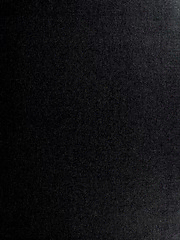
Ocean bottom modeling for ray acoustics. PDF
Preview Ocean bottom modeling for ray acoustics.
NAVAL POSTGRADUATE SCHOOL Monterey California , THESIS OCEAN BOTTOM MODELING FOR RAY ACOUSTICS by Trevor N. Jones December 1991 Thesis Advisor Lawrence J. Ziomek Approved for public release; distribution is unlimited. lassificd uy classification ofthis page REPORT DOCUMENTATION PAGE leport Security Classification Unclassified lb Restrictive Markings iecunty Classification Authority 3 Distribution Availability of Report ^classification Downgrading Schedule Approved for public release; distribution is unlimited. ;rforming Organization Report Number(s) 5 Monitoring Organization Report Number(s) ,'ame of Performing Organization ob Office Symbol 7a Name of Monitoring Organization val Postgraduate School (ifapplicable) 33 Naval Postgraduate School address (dry, state, and ZIP code) 7b Address (citv, state, and ZIPcode) nterey, CA 93943-5000 Monterey, CA 93943-5000 \'ame ofFunding Sponsoring Organization 8b Office Symbol 9 Procurement Instrument Identification Number (ifapplicable) Address (city, state, and ZIPcode) 10 Source of Funding Numbers Program Element No Project No Task No Work Unit Accession No OCEAN BOTTOM MODI:LING FOR RAY ACOUSTICS .tie (includesecurity classification* 'ersonal Author(s) Trevor N. Jones Type of Report 13b Time Covered 14 Date of Report (year, month, day) 15 Page Count ister's Thesis From To December 1991 142 upplementary Notation The views expressed in this thesis are those ofthe author and do not reflect the official policy or po- on ofthe Department of Defense or the U.S. Government. aspsati Codes 18 SubjectTerms (continue on reverse ifnecessary andidentify by block number) Group Subgroup word processing, Script, GML, text processing. \bstract (continue on reverse ifnecessary andidentify by block number) Akima cubic spline and spatial Fourier series (SFS) techniques for modeling ocean bottom contours from bathymetric a were comparatively analyzed. SFS methods encountered difficulty in ocean bottom reconstruction despite several en- lcements to the fundamental technique. Both Akima cubic spline and SFS approaches proved unsatisfactory in re- ducing first and second-order derivatives for several arbitrarily shaped ocean bottom contours. A simple reflection angle algorithm for arbitrary one-dimensional bottom models was examined and found to be accurate. graphical demonstration ofacoustic ray interaction with the ocean bottom using a variety of mathematical ocean bottom dels and the reflection anale algorithm was conducted. Distribution,Availability of Abstract 21 Abstract Security Classification unclassified unlimited same as report DT1C users Unclassified Name ofResponsible Individual 22b Telephone (includeArea code) 22c Office Symbol wrence J. Ziomek (408) 646-3206 72Zm FORM 1473,84 MAR 83 APR edition may be used until exhausted security classification ofthis page All other editions are obsolete Unclassified Approved for public release; distribution is unlimited. Ocean Bottom Modeling For Ray Acoustics by Trevor N. Tones Lieutenant Commander, Royal Australian Navy B.Sc, University ofNew South Wales, Australia, 1980 Submitted in partial fulfillment ofthe requirements for the degree of MASTER OF SCIENCE IN ENGINEERING ACOUSTICS from the
